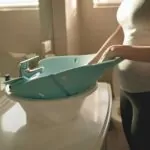How to Take Care of Baby Teeth: Dental Hygiene

As parents, one of the most significant milestones in your child’s development is the emergence of their first tooth. While this is an exciting time, knowing how to take care of baby teeth and gums is crucial to ensuring your child’s dental health is on the right track. This guide will explore effective strategies and best practices for maintaining your baby’s oral hygiene from infancy through their toddler years.
1 Understanding the Importance of Baby Teeth

Before diving into how to take care of baby teeth, it’s essential to understand their importance. Baby teeth, also known as primary teeth, play a vital role in your child’s overall health and development. They aid in proper chewing, and speaking, and hold space for the permanent teeth that will eventually replace them. Therefore, taking care of baby teeth is not just about dental health but also about ensuring a healthy foundation for your child’s future.
2 When to Start Oral Care

Oral care should begin even before your baby’s first tooth appears. Gently cleaning your baby’s gums with a soft, damp cloth after feedings can help prevent the buildup of harmful bacteria. Once the first tooth emerges, usually around six months, it’s time to introduce a baby toothbrush.
3 Choosing the Right Tools

Select a toothbrush with soft bristles designed specifically for infants. Use a rice grain-sized amount of fluoride toothpaste to gently brush your baby’s teeth. As more teeth appear, make sure to brush them all, focusing on where the tooth meets the gum line.
4 How to Take Care of Baby Teeth and Gums?

- Regular Brushing: Twice a day, gently brush your child’s teeth with a soft-bristled toothbrush and fluoride toothpaste. This habit not only cleans the teeth but also introduces your child to the routine of oral hygiene.
- Healthy Diet: Limit sugary drinks and snacks, as sugar can lead to tooth decay. Encourage a diet rich in fruits, vegetables, and whole grains to promote overall and dental health.
- Avoiding Tooth Decay: Be mindful of practices that can lead to tooth decay, such as putting your baby to bed with a bottle of milk or juice. The sugars in these liquids can cause decay if they remain on the teeth for extended periods.
- Regular Dental Visits: Schedule your child’s first dental visit by their first birthday or when the first tooth appears. Regular check-ups every six months can catch any issues early and get professional advice on how to take care of baby teeth.
- Fluoride Treatments: Ask your dentist about fluoride treatments and supplements, especially if your local water supply lacks fluoride. This mineral is essential in hardening the tooth enamel and preventing decay.
- Dealing with Teething: Teething can be uncomfortable for your baby. Provide safe teething toys, and consult your paediatrician for pain relief methods if needed.
- Education and Habits: Teach your child the importance of dental hygiene as they grow. Make brushing and flossing a fun part of their daily routine.
5 Common Challenges and Solutions
Taking care of baby teeth might come with challenges, such as resistance to brushing or fear of the dentist. Here are some solutions:
- Make Brushing Fun: Use fun toothbrushes and flavoured toothpaste. Sing songs or tell stories to make the experience enjoyable.
- Positive Reinforcement: Praise your child for good oral hygiene habits. Consider a reward system to encourage them.
- Role Modelling: Children learn by example. Brush your teeth alongside them to show it’s a normal part of daily life.
- Gentle Introduction to Dentistry: Choose a paediatric dentist who is experienced in handling young children. A positive first experience can set the tone for future visits.
6 Wrapping Up
Knowing how to take care of baby teeth and gums is fundamental for your child’s health and development. By starting early, establishing good habits, and seeking professional guidance, you can ensure your child’s smile remains healthy and bright. Remember, the journey of dental care starts with the first tooth, setting the stage for a lifetime of healthy smiles.
Community Q&A
About This Article
This article has been viewed 127 times.



